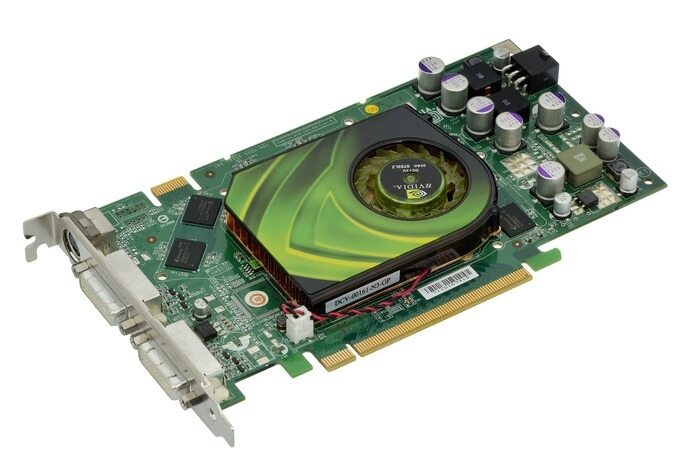Nvidia Stock (NASDAQ:NVDA)
The semiconductor sector is going through tough times overall, which was reflected in Nvidia Corporation’s (NASDAQ:NVDA) dismal financials and less-than-optimistic expectations. This is due to the high level of macroeconomic uncertainty. The industry’s long-term prospects appear promising in the meantime. The demand for GPU-powered solutions may increase tremendously as technology advances. I am optimistic about the future of NVIDIA stock since the company is well positioned in the industries where growth is anticipated to outpace performance. I think Nvidia is off to a solid start, and once businesses begin using AI applications at scale, the monetization of Nvidia’s new offering might stand out more as a result of the strong pull of the higher margin data center and AI-focused software and services.
Accounting and Outlook
Due to the gaming division’s poor performance, NVIDIA’s sales in the fourth quarter of fiscal 2023 decreased by 20.8% YoY to $6.1 billion, while EPS decreased by 53% YoY to $0.57. Positively, the gross margin improved to 63.3% (up 9.7 p.p. QoQ), showing a trend in the right direction. According to the management’s outlook, sales will slightly grow in quarterly terms but will have severely negative annual dynamics. The company’s balance sheet, which is still healthy, permits significant funding to be allocated to buybacks.
In accordance with the overall semiconductor sector, which is now going through a cyclical slowdown amid increased macro uncertainty and other uncertainties, the approaching several quarters are likely to be challenging for Nvidia. Due to the anticipated 5.6% decline in integrated circuit prices, the semi-market is predicted to weaken overall by 4.1%, while low single-digit growth is anticipated in other main categories. Yet, the industry’s long-term prospects appear promising. The world’s technological development is still advancing, so the need for ICs may only increase. Going forward, Nvidia has an edge due to its strong position in the industries with the highest growth prospects.
Prospects for Data Centers in the Future
Let’s start with the solutions for data centers. Enterprise IT investment is anticipated to continue strong despite budgetary restrictions. The 0.7% growth anticipated for 2023, however, shows that data center spending is not a bullish sector. This assumption, in my opinion, may not take into account the potential of generative AI, which, coupled with other quickly developing fields like deep learning and supercomputing, may produce some double-digit patterns. Due to the less effective x86 CPU-based solutions, the usage of GPUs in these later areas is becoming increasingly widespread. I believe this may accelerate the enterprise IT system refresh cycle in order to meet future computing demand.
In order to fight for excellence in the market, hyper-scale cloud providers need to keep updating and growing their cloud offerings with AI-based solutions. The excitement around ChatGPT is driving up demand for generative AI, which is predicted to develop at a CAGR of 34.3% over the next ten years and may lead to a long-term increase in HPC usage. As a result, the training market and increasing model complexity may spur data center providers to expand their infrastructure and lead to a significant uptake of NVDA’s H100 data center GPU.
The drawback is that future revenue development in the data center business line may be hampered by China’s supply limits on HPC processors. The demand for these chips is anticipated to be extremely high globally, but I think NVDA will be able to make up for the losses by shifting supplies to other markets.
Continuing Expansion in the Gaming Sector
With its GeForce series accounting for more than 70% of the market, NVIDIA is the market leader in gaming GPUs. With revenue growth up 16% QoQ in the most recent quarter because of the high acceptance of the 40-series of RTX GPUs and channel inventory recovery, the segment is showing an improving (on a sequential basis) pattern.
Due to the expensed device renewal cycle, it appears that the gaming segment’s revenue will continue to underperform on a YoY basis in the upcoming few quarters. However, I anticipate that after a while, demand for the company’s GPUs will level off, supported by a growing number of video cards based on the newest GeForce RTX 40 family graphics processors becoming more widely available. In addition, the new DLSS version performs truly astonishing feats and, in the highest mode, can render 7 out of 8 pixels due to the effective fusion of strong hardware with software and neural networks. In my opinion, these 3 pillars offer more stable revenue growth in the gaming industry when the crypto-induced volume volatility has faded.
The Advancement of Self-Driving
The market for driverless vehicles may also experience expansion. Although the business is still in its infancy, it has a bright future because several Technology companies and automotive behemoths have already shown off self-driving car prototypes. The DRIVE Thor, which can achieve the fifth degree of self-driving capability, strikes me as a minor revolution. For context, the self-driving feature of Tesla (NASDAQ:TSLA) is still at level 2. Nvidia may be able to assume a dominant position in this market given its expertise and strategic alliances with the major competitors in the automotive sector.
Audi, Mercedes-Benz, Tesla, BMW, Honda, and other automakers already employ Nvidia’s solutions for infotainment and navigation systems, digital dashboards, and advanced driver assistance systems built on the Tegra platform. So, continued use of the DRIVE platform as a computer system for autonomous vehicles could result in a respectable stream of subscription income from enhanced ADAS.
Also, the first Grace-based products are anticipated to hit the market later this year; as a result, NVIDIA might be able to put direct rivalry against the manufacturers of server processors in the near future. NVIDIA is also banking on the universe’s development. It can be compared to a high-tech sandpit where anyone can simulate or build anything, and this could pave the way for the future of industrial planning, engineering, and cost optimization.
And when everything is in place—powerful hardware for gaming and training, neural network capabilities, and omniverse—the circle is complete, making it possible to successfully compete in the major markets and spur future revenue development.
Reversion angle and valuation
NVIDIA stock is trading at levels that are obviously disproportionately expensive when considering valuation. The company appears to be much more costly than its peer group in terms of EB/EBITDA and P/E ratios. Yet, considering Nvidia’s dominant position in the GPU market, great profitability, and promising growth prospects, such a large premium on financial multiples may generally be justified.
NVIDIA is now trading at a TTM P/E of 80.4x, which is almost a 5x premium over the median P/E of its peer group of 16.1x. Yet, the possibility of the business’s reasonable growth potential should not be discounted, therefore I choose to make use of them in order to learn more about the reversion aspect. However, let’s start with the projections.
For FY2024, I anticipate Nvidia to generate $30.7 billion in sales, a 13.8% YoY increase. Particularly, it is anticipated that the Data Center division’s revenue will increase by 15% YoY ($17.3 billion), largely due to the support of hyperscale clients. I anticipate a 10% growth in the gaming segment, supported by the RTX 4000 lineup’s incoming 4070 and 4060 models. According to me, the automotive industry has the highest growth-intensive potential (50% growth for FY2024), and I think Nvidia has the capacity to increase this segment by $0.5 billion annually for the following five years.
In light of the fact that last year’s result included $2.2 billion in inventory charges, the gross margin is anticipated to reach 65% going forward, which is in line with a 2.3% decline in the cost of revenue. With earnings per share of $4.61 and beyond estimates, we are adding $11.4 billion to the bottom line.
In contrast to the substantially negative growth projection for completion, the forecasts show a 36.2% YoY earnings growth for the year ending January 2024. This may reduce the P/E ratio to 57.9x and eliminate over half of that valuation premium.
According to analysts’ projections, Nvidia has a huge future growth potential of 30%. The final column shows a sharp decline in the P/E ratio, with a potential reversion angle of 30% growth to further reduce the denominator and lower the ratio from 44.5x in FY2025 to the low 20s.
I am positive about NVIDIA because, in my opinion, the higher margin data center and AI-focused software and services could support the aforementioned reversal angle once corporations begin using AI applications at scale.
Risk Elements
The likelihood of additional interest rate increases could maintain the high volatility of technology companies. We might anticipate a slower rebound in the semiconductor industry and, consequently, a slower recovery in demand for NVIDIA products if the macroeconomic condition around the world continues to deteriorate. Also, this could reduce the company’s competitive position, alter the market, and impede the acceptance of the new service.
Conclusion
Given the huge profit potential of the company, I think the NVIDIA stock’s current premium valuation is unsustainable in the long run. What does the rapid development and acceptance of AI mean for the company? is how I would sum up the primary future potential for Nvidia. My response is that it could be interpreted as déjà vu because AI applications demand a significant amount of processing power, which suggests that the current cycle of demand for powerful GPUs may not have even begun yet. The previous one occurred during a boom in mining. The transition from ChatGPT 3, which supported 175 billion parameters, to ChatGPT 4, which supports up to 1 trillion parameters, demonstrates the advancement in the interim. In order to handle more demanding next-generation AI technologies, data centers may start upgrading their server architecture with more potent GPUs.
Featured Image: Pixabay @ WikimediaImages















